Learn To Spot Common Skin Cancer Symptoms (Updated 2024)
Skin cancer is the most prevalent cancer in the United States. According to the American Academy… Read On
Dermatology Associates of Rochester
100 White Spruce Boulevard
Rochester, NY 14623
Phone: (585) 272-0700
Fax: (585) 272-8356
Mon–Fri: 8 a.m.–5 p.m.
Dermatology Associates of Rochester
,
Phone: (585) 272-9346
Fax: (585) 272-7592
Mon: 9 a.m.–5 p.m.
Tues, Wed, Thurs: 9 a.m.–7 p.m.
Fri: 9 a.m.–6 p.m.
Sat: 8 a.m.–12:30 p.m.
*Or after last appointment
Dermatology Associates of Rochester
,
Phone: (585) 697-1818
Fax: (585) 697-0822
Mon–Fri: 8 a.m.–5 p.m.
At Dermatology Associates of Rochester, our board-certified dermatologists, physicians, and nurse practitioners have the experience and training to treat virtually all conditions which commonly affect the skin, nails, and hair. We create personalized treatment plans for each of our patients to help them resolve their condition, or at least manage it effectively and minimize symptoms.
If you have concerns about a specific skin condition or simply want to have a board-certified dermatologist examine your skin, request a consultation using the online form, or call our office at (585) 272-0700 to schedule an appointment.
These are the most common conditions treated at our Rochester dermatology clinic:
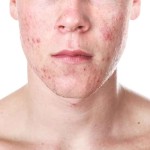
Even though acne is an extremely common skin condition, accurate information about its causes and treatments can be hard to find. Oil-producing glands in the skin—most often on the face, chest, and back—become inflamed and result in pimples, pustules, and cysts. Mild acne often resolves on its own without specialized treatment, but severe acne can result in scarring. Our dermatologists tailor acne treatments to the severity of the acne with the goal of minimizing breakouts and scarring.
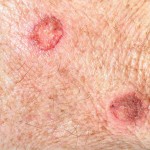
Skin damaged by prolonged sun or other UV exposure can develop pre-cancerous lesions called actinic keratosis. The most common areas where actinic keratosis form are the face, scalp, forearms, and chest. They can appear as scaly, slightly raised spots and can be tan, brown, pink, or even skin tone. Treatment for actinic keratosis includes CellFX®, a nonsurgical, energy-based procedure; cryotherapy, which involves freezing and removing the lesions, or photodynamic (light) therapy. We also offer prescription creams for treatment.
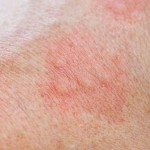
Contact dermatitis is the red, itchy rash that develops after the skin is exposed to an allergen or irritant. Determining the specific cause of contact dermatitis is the first step in treating the condition. That can take a bit of detective work in some cases and our dermatologists may ask about your pets, work, how you spend your free time, and the soaps, detergents, and skin care products you use to zero in on a cause. Poison ivy is one of the most well-known causes of contact dermatitis. We may perform a patch test to determine what you’re allergic to that is causing the rash.
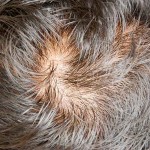
Disease, medication, genetics, hormones, or localized trauma may be responsible for hair loss. Our dermatologists diagnose the cause of hair loss in women and men before creating a personalized treatment plan.
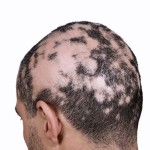
This autoimmune skin condition occurs most commonly in children and results in hair loss in round or oval patches, usually on the scalp. The hair loss occurs when the body’s immune system starts attacking hair follicles. There is no cure for alopecia areata, but various treatments such as anti-inflammatory drugs and topical immunotherapy can help prompt new hair growth. Rogaine® (minoxidil), which is used for male pattern balding, can also be used for alopecia areata.
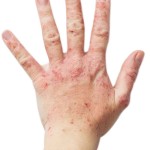
Most common in children, this itchy skin condition produces tiny blisters that can ooze, eventually producing crusted, thickened patches of skin. Most cases appear before a child’s 5th birthday, but it is occasionally diagnosed in older children and adults. Dermatologists don’t know exactly what causes eczema, but the condition is being diagnosed more frequently than in the past. It can be associated with allergies, asthma, and a family history of eczema. Treatment often focuses on symptom relief to reduce itching and prevent infection.

We established Dermatology Associates of Rochester to provide quality, compassionate medical and cosmetic skincare and plastic surgery services in a boutique setting where patients felt like part of an extended family. Our board-certified dermatologists, plastic surgeon, nurse practitioners, and registered nurses work together with our professional staff to ensure you enjoy an exceptional experience each time you visit.
Meet the Team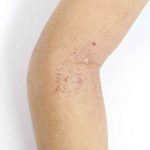
Virtually everyone at some point experiences dry skin, but there’s a difference between intermittent dryness and extreme dry skin that requires treatment by a dermatologist. Our dermatologists closely examine patients’ skin and determine if dry skin may be a sign of dermatitis or inflammation. Our practice specializes in treating dry skin and its related effects, such as rashes.
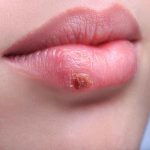
Herpes simplex can be either Type 1, which produces cold sores or fever blisters on the mouth, or Type 2, which is typically spread through sexual contact and produces blisters on the buttocks or genitals. Even though there is no known cure for this contagious condition, our dermatologists treat the condition with medication to minimize the number and severity of outbreaks and to relieve discomfort.
Shingles is caused by the herpes zoster virus—the same one that causes chickenpox. The symptoms of shingles often start as a burning pain or tingling in the affected area, followed shortly by a painful, blistering rash. The condition is most commonly diagnosed in people over 50.
Early treatment can help minimize the symptoms. Left untreated shingles can cause scarring and nerve pain that can last for months or longer. There are shingles vaccines approved by the FDA that reduce the risk of contracting the disease.
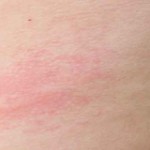
Hives are itchy welts on the skin that are usually a sign of an allergic reaction. Food, medication, or viral infections can cause acute hives, which may last as little as 24 hours or up to 6 weeks. Chronic cases of hives last longer than 6 weeks and often recur for months or years. Our dermatologists prescribe antihistamines to treat mild cases of acute hives. A diagnosis of chronic hives involves a personalized treatment plan that focuses on preventing future outbreaks.
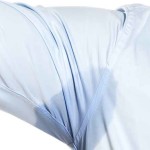
Excessive underarm sweating, or hyperhidrosis, can be an embarrassing condition that affects patients in both social and professional settings. Overactive sweat glands can cause excessive sweating on the hands and feet, too. Ours is one of the only practices in the region to offer miraDry® to treat hyperhidrosis. It’s a nonsurgical solution that uses heat to eliminate sweat and odor glands. BOTOX® injections can temporarily minimize excessive sweating, as well.
Almost every adult has at least 2 or 3 moles on his or her body and people with light skin may have between 10 and 40 moles. Moles may be tan, brown, or skin-colored and can be raised or flat. People with several moles can get the moles “mapped” by a dermatologist to help notice any future changes in the shape or size of specific moles. The American Academy of Dermatology developed the “ABCDE” guide to assessing if a mole might be cancerous.
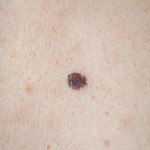
If you’re concerned about a mole’s appearance, get it checked as soon as possible by one of our providers.
We can also remove unsightly or bothersome moles that aren’t a health risk. We use different techniques and procedures, such as freezing, cauterizing, or snipping. We also offer an innovative, nonsurgical mole removal treatment at our Rochester practice called CellFX, which targets cells without damaging the surrounding skin. These are outpatient procedures. Healing and recovery times vary, but they’re relatively quick. The cost of treatment depends on the size and depth of the growth, as well as the number of growths to be removed.
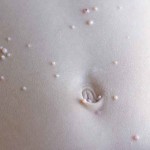
This common, contagious skin disease is characterized by raised pink or yellow bumps. It is caused by a virus and often spreads when children share towels or clothes or through skin-to-skin contact. In many cases, especially with children, the condition clears without treatment. Our dermatologists can help determine if treatment is needed and, if so, create a personalized plan to help clear up the bumps.
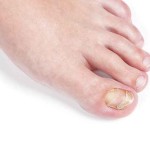
Changes in the color or thickness of nails can occur for various reasons. Fungal or bacterial infections are the most common causes of nail disorders, but genes, psoriasis, or even just the aging process can also cause nails to change. Patients can contract fungal nail infections in warm, moist places such as locker rooms or a pool deck. Wearing the same sweaty socks or shoes that trap moisture around your toenails can also lead to a fungal infection. Different treatments are available, and our providers will tailor your treatment to the specific nail disorder.
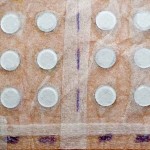
Our providers use patch testing to identify allergens in patients suffering from allergic contact dermatitis. Patients with recurring rashes that we suspect are caused by reactions to some allergen usually benefit from patch testing. Patch testing is completed over 3 visits to our office. We apply patches to your back in the first visit. They’re covered with tape and left in place for 48 hours. During the second and third visits, we determine if any of the tested sites developed an allergic reaction.
We specialize in diagnosing and treating skin conditions in infants and children. Common conditions in children include:

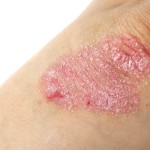
Millions of Americans are afflicted with Psoriasis, a chronic immune-associated skin condition, which appears as red, scaly patches on the scalp, hands, feet, elbows, or knees. Psoriasis occurs when the body’s immune system prompts the overproduction of skin cells, which causes excess skin to pile up on the skin’s surface. It’s not contagious. Our providers can treat the condition with topical therapy, phototherapy, systemic medication, or biologic therapy (or a combination of 2 or more of these treatments).
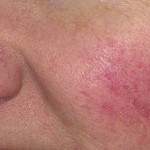
There are actually 4 types of rosacea producing a variety of symptoms and signs. Rosacea is often linked to redness, but it can also cause pimples, small blood vessels, swelling, and irritation. It can be triggered by stress, certain foods or beverages, and sunlight. Our dermatologists use their expertise to diagnose your specific rosacea and develop an individualized treatment plan.
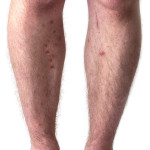
A microscopic, 8-legged bug called the “human itch mite” causes this uncomfortable condition by burrowing under the skin and laying eggs. Scabies can develop anywhere on the skin, but the most common locations are the hands, arms, and skin that’s usually covered by clothing or jewelry. Millions of cases of scabies occur worldwide every year, in part because the condition is highly contagious. It can be transferred by direct contact with an infected person, or an infested object such as a towel, bedding, or furniture. Since it is so contagious, when one person in a household is infected with scabies, every member should be treated.

Skin cancer is the most commonly diagnosed type of cancer, but also highly treatable in the majority of cases. There are 3 primary types of skin cancer—basal cell carcinoma, squamous cell carcinoma, and melanoma. The first 2 types account for about 95% of skin cancer cases and typically respond very well to treatment.
Melanoma is much more serious and can spread to other parts of the body and be life-threatening. Our practice is dedicated to the prevention and early detection of all skin cancer cases. We encourage everyone to wear sunscreen daily because sun exposure is the primary cause of skin cancer.
Dermatologic surgery can be needed for a range of skin conditions to remove different types of growths. These can be either medically necessary or performed for cosmetic reasons. Visible skin tags, cysts, and benign lesions may be removed for cosmetic reasons. Skin surgery may be medically necessary for basal cell or squamous cell carcinomas, or pre-cancerous lesions. Skin surgery includes various techniques, including:
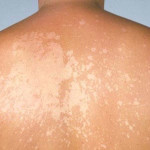
Yeast lives on everyone’s skin, but when it grows uncontrolled it can cause tinea versicolor. Yeast is a type of fungus, so this skin condition is technically a fungal infection. It commonly occurs in tropical and subtropical areas, or anywhere that warmer temperatures are normal. Tinea versicolor appears as uneven skin color and may cause scaling on the neck, back, and chest. Topical or oral anti-yeast medications are commonly used for treatment.
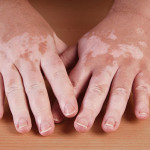
Vitiligo is characterized by patchy loss of pigment in the skin. The affected areas can be lighter than surrounding skin, or can even turn completely white. The cause of vitiligo is unknown, but the risk increases if a person has a close blood relative with the condition or autoimmune diseases such as Hashimoto’s Disease or alopecia areata.
Vitiligo can affect various parts of the body (some people even develop a light streak of hair), but no other symptoms occur. We usually treat vitiligo using topical medications or phototherapy.
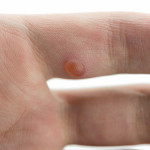
These rough, raised bumps appear when a virus called the human papillomavirus (HPV) infects the skin’s top layer. Warts on the skin are typically benign (or non-cancerous) growths, but they are highly contagious and can be spread by contacting the wart itself or even something that came into contact with the wart. Warts can be treated in various ways, and our providers determine the best course of action after examining a patient’s skin.